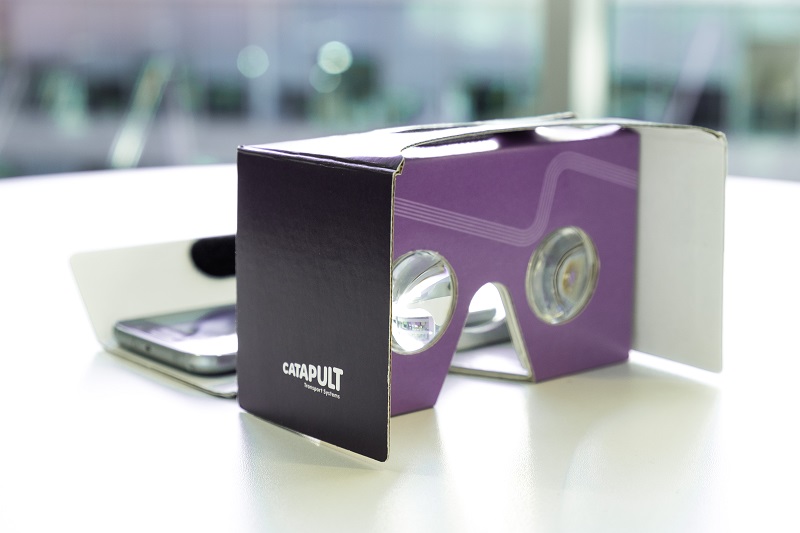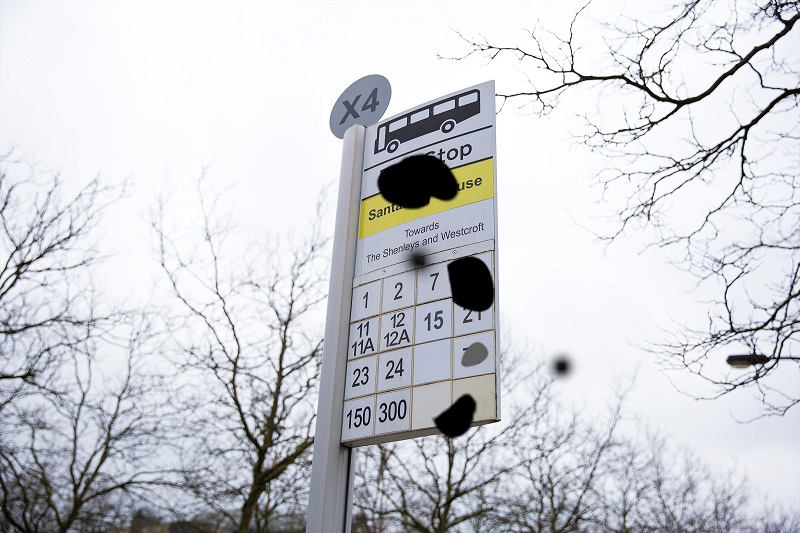Eyeware app
A virtual reality tool has been created to help designers improve buildings and public transport for people with sight loss.
Royal National Institute of Blind People (RNIB) statistics suggest that more than two million people in the UK are affected by sight loss, and by 2050, this will double to nearly four million. Findings from the RNIB’s 2015 ‘My Voice’ survey revealed that 40% of blind and partially-sighted people were not able to make all the journeys they wanted or needed to because of a lack of accessibility.
The smartphone app – Eyeware - launched in March 2017, allows users to experience the world around them from the viewpoint of people with a range of different sight loss conditions. Eyeware was developed in collaboration with RNIB and applies virtual filters over the surrounding environment which mimic sight loss conditions in real time.
Users can experience simulations of diabetic retinopathy, retinitis pigmentosa, cataracts and glaucoma.
The filters are being used at the Transport Systems Catapult to help design accessible transport systems at the organisation’s ‘Visualisation Laboratory’. This unique facility is designed to help industry develop virtual reality (VR) and augmented reality (AR) applications.
Project leader Martin Pett, Principle Technologist at the Transport Systems Catapult, said; “Urban environments like stations and new technology, can be confusing for anyone, but the difficulties this causes can be increased 10-fold when someone is blind or partially sighted. Our app allows users to put themselves in the shoes of people with sight loss conditions, so they can make better decisions about accessibility. Not only are we aiming to raise awareness of these disabilities, but our app will also have practical applications. For instance, we are helping architects design stations that are easily navigable for people with sight loss and looking at ways to make self-driving cars more accessible.”
The app is available to the public as an educational tool to help increase awareness of eye conditions. It is available for download from the Apple store and Google Play store. You can find more here.
Images and content courtesy of Catapult.
[edit] Related articles on Designing Buildings Wiki
- Accessibility in the built environment.
- Artificial intelligence and civil engineering.
- Augmented reality in construction.
- Caution Cinema.
- Gravity Sketch.
- Guide Dogs' Inclusivity campaign.
- Immersive Hybrid Reality IHR.
- People with disabilities.
- The Palimpsest.
- TruVision.
- Virtual construction model.
- Virtual reality and manufacturing.
- Virtual reality in construction.
Featured articles and news
Infrastructure that connect the physical and digital domains.
Harnessing robotics and AI in challenging environments
The key to nuclear decommissioning and fusion engineering.
BSRIA announces Lisa Ashworth as new CEO
Tasked with furthering BSRIA’s impressive growth ambitions.
Public buildings get half a million energy efficiency boost
£557 million to switch to cleaner heating and save on energy.
CIOB launches pre-election manifesto
Outlining potential future policies for the next government.
Grenfell Tower Inquiry announcement
Phase 2 hearings come to a close and the final report due in September.
Progress from Parts L, F and O: A whitepaper, one year on.
A replicated study to understand the opinion of practitioners.
ECA announces new president 2024
Electrical engineer and business leader Stuart Smith.
A distinct type of countryside that should be celebrated.
Should Part O be extended to existing buildings?
EAC brands heatwave adaptation a missed opportunity.
Definition of Statutory in workplace and facilities management
Established by IWFM, BESA, CIBSE and BSRIA.
Tackling the transition from traditional heating systems
59% lack the necessary information and confidence to switch.
The general election and the construction industry
As PM, Rishi Sunak announces July 4 date for an election.
Eco apprenticeships continue help grow green workforce
A year after being recognised at the King's coronation.
Permitted development rights for agricultural buildings
The changes coming into effect as of May 21, 2024.

























